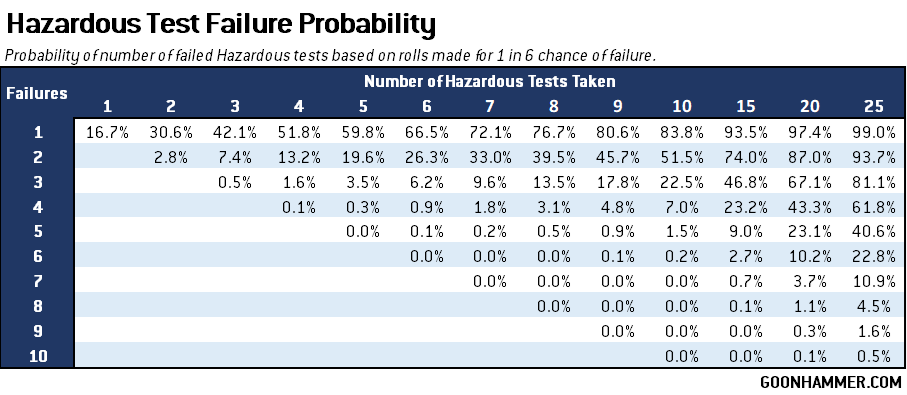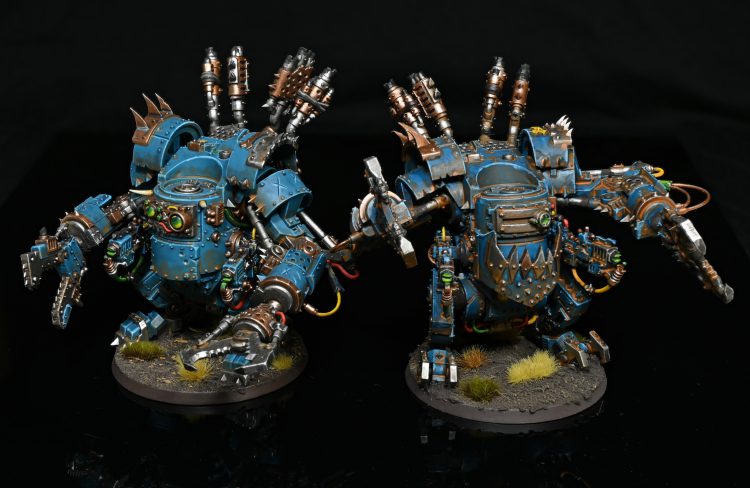This week’s Hammer of Math succumbs to the temptation and pushes The Button on [HAZARDOUS] Test with the new Ork Codex.
April brings about many changes. Spring has arrived in full force, the days get longer, Maryland gives us a brief respite before plunging into Swamp-Ass Summer, and Games Workshop has released two new Tenth Edition army books. This week we’re going to positive and look at the risks associated with the Dread Mob Detachment in Codex: Orks. While my army is so old it doesn’t even have legal bases on the boyz, I’ve always been a fan of Orks and their potential to cause mayhem in the 41st millennia as well as the tabletop.
Send In The Dread Mob
One of the more intriguing (and potentially hilarious) options for the Orks is the Dread Mob, which is when a bunch of fungus-based soccer hooligans decide it would be hilarious to jump into armored trash cans with legs and see what happens when they push every button nearby. The spirit of the reckless enthusiasm is contained within the Try Dat Button! rule, which is activated each time a unit is selected to fight or shoot. The player rolls a D6 and the result is one of three options. On a 1-2 all models have [SUSTAINED HITS 1], on a 3-4 they get [LETHAL HITS], and on a 5-6 every time the attacking unit has a Critical Wound it improves the AP of the attack by 2.
If a player wants to take a different kind of risk, they can choose one of the three options at the expense of giving all of their weapons the [HAZARDOUS] trait, which we covered nearly a year ago. To make it truly Orky, if more than one ability grants [HAZARDOUS] then the Hazardous test is failed on a 1-2. Given that multiple Stratagems grant this ability it’s important to see exactly what happens when you double the chance of failing the test.
Hazardous Tests
The Hazardous test is a pretty simple effect. When a model makes an attack with a weapon with the [HAZARDOUS] trait, it then has to take a Hazardous test. On a roll of a 1 (or 2 now), INFANTRY units lose a model while CHARACTER, VEHICLE, and MONSTER units take 3 mortal wounds. Multiple attacks with multiple weapons produce multiple tests, such as when a Leman Russ Executioner overcharges all of its plasma weapons. As one would expect, more tests means more potential for failure. To calculate the probability we calculate the binomial probability that a given number of failures will occur over a given number of trials. The table below shows the results.
 To use this chart, select the number of attacks to be made and then reference the probability for each potential failure. For example, the 9 weapons that a Stompa will fire will almost certainly inflict 3 mortal wounds, and there’s a roughly 1-in-6 chance that almost one third of the models own wounds could be stripped from a single round of firing.
To use this chart, select the number of attacks to be made and then reference the probability for each potential failure. For example, the 9 weapons that a Stompa will fire will almost certainly inflict 3 mortal wounds, and there’s a roughly 1-in-6 chance that almost one third of the models own wounds could be stripped from a single round of firing.
What happens when we double the chance of failing the test?
 Now things get particularly scary. That same Stompa which was most likely to only lose 3 wounds from before is taking a major gamble and will lose 9 mortal wounds more than half the time it shoots. The number of variables involved makes it difficult to make a blanket statement regarding the optimal time to make things more dangerous for your own units, but there is definitely a major consequence for doing so.
Now things get particularly scary. That same Stompa which was most likely to only lose 3 wounds from before is taking a major gamble and will lose 9 mortal wounds more than half the time it shoots. The number of variables involved makes it difficult to make a blanket statement regarding the optimal time to make things more dangerous for your own units, but there is definitely a major consequence for doing so.
Push. The. Button.
Ultimately the optimal choice will heavily depend on the circumstances of the moment, but the risk of doubling the probability of failing a Hazardous test is significant. Units which are in strategic positions or missing several wounds may find themselves more likely to kill themselves than the enemy. On the other hand, the bonus damage from using the proper combination of ability and Stratagem may turn the (Green) tide of battle. Whether Lethal Hits or Sustained Hits is a better choice is also something worth considering.
Thanks for reading! If you have any questions or comments feel free to email us at contact@goonhammer.com. That’s also the best way to suggest topics for future articles.




